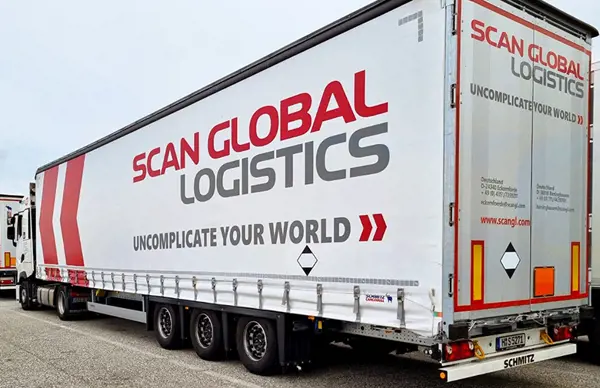
Scan Global Logistics’ revenues rise on the back of airfreight demand
Scan Global Logistics saw revenues improve in the first quarter of the year, thanks in part to the performance of its airfreight business.
The company registered a 31% increase in first-quarter revenues to €491m, earnings before interest, tax, depreciation and amortisation (ebitda) before special items was up 8% to €43m and its result for the period was a loss of €24m compared with a €9m loss last year.
The forwarder said the increase in revenue was mainly impacted by the continued growth in air and ocean volumes, combined with higher freight rates.
Overall air and ocean revenues improved by 39% year on year to €578m.
“We experienced solid growth in our Nordic market, in particular for Denmark and Sweden,” the company said. “Further, renewable projects grew compared to last year and Asia continues to contribute to our solid growth.
“Moreover, the network effect from our investments in Italy and Brazil continues to impact both activity and revenue as expected, mainly in the Asia region.”
The lower overall result for the period was down to higher amortisations from acquisitions of businesses and investments in IT projects; higher special item costs driven by restructuring activities in North America, M&A-related costs and green-field start-up activities; and higher negative foreign exchange rates.
Looking at airfreight performance, Scan Global saw airfreight volumes increase by 9% despite some traffic shifting back to ocean transport.
The increase was driven by a mix of both organic growth and the acquisitions of Foppiani (Italy) and Blu Logistics (Brazil) in June and September 2024 respectively.
The organic growth in Airfreight volumes was supported by onboarding new customers affecting particularly the Europe, Middle East and Asia and Asia Pacific regions.
However, the company added: “Despite year-on-year growth, the positive development was impacted by an offsetting effect from the conversion of shipments between air- and ocean freight, which in 2024 converted from ocean to airfreight and began to convert back during Q1 2025.”
“We continue to see high demand from customers seeking flexibility and reliability in a logistics landscape marked by shifts between transport modes,” said chief executive Allan Melgaard.
“This is especially true in EMEA and Asia, where our local teams demonstrate agility and strong execution capabilities. At the same time, the market remains characterised by significant uncertainty. The conflict in the Red Sea and the risk of new tariff barriers are affecting both capacity and pricing in global trade.”
